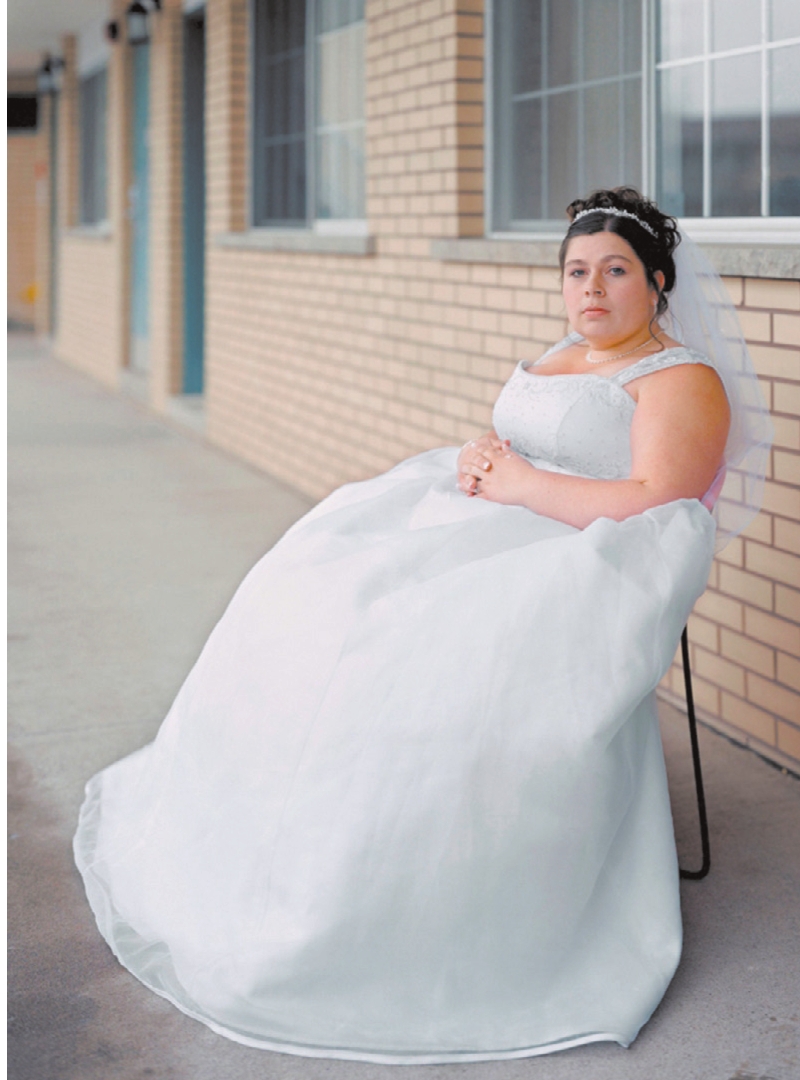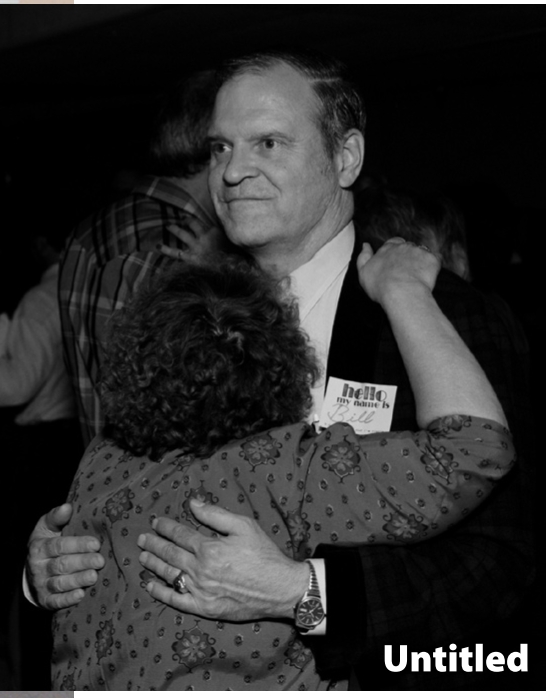![]()
ART / Wednesday, December
14,2011
By Carl Mellor
Focus
on America
Photographer Alec Soth captures the quirky and the queer, and it’s on display at the Everson
 |
America is a vast place, and capturing it in new and unusual ways is beyond
the grasp of many. Photographer Alec Soth gave it a shot (so to speak),
and the results are on display at the Everson Museum of Art. From Here
to There: Alec Soth’s America presents a large selection of Soth’s
photos taken during the past 15 years in various locales: up and down
the Mississippi River, near Niagara Falls, in Texas and Minnesota.
The show draws from various segments of Soth’s work, including his early photography and a project documenting movie theater facades in rural Texas, but the exhibit’s energy comes primarily from his storytelling, from narratives about everyday people far removed from Hollywood or professional sports or reality TV. The images don’t offer pat conclusions on life in the United States or pretend to define people’s lives. Instead, the vision is complex, offbeat, based on what Soth has found during his journeys around the country.
Again and again, his photos convey a sense of subjects without overreaching. People’s lives are complicated, and a single photo can’t begin to sum up an individual’s existence. Soth’s images often imply, suggest and challenge viewers to evaluate several possibilities.
Consider, for example, several photos from “Sleeping by the Mississippi,” the artist’s first major project and one created during road trips extending from Minnesota to New Orleans. Joshua, an inmate at Angola State Prison in Louisiana, appears with the word “Preacherman” sewn into his collar. We can speculate about why he’s in prison, whether he began practicing religion before or after incarceration, and other options.
Similarly,
an image taken in Davenport, Iowa, portrays a mother and daughter who
seem to be experiencing intense emotions. We don’t know if they are
concerned about economic troubles or a relative’s health or another
issue.
 |
Those two images, like most of those hung at the Everson, were shot after Soth asked a person to pose for him. We weren’t privy to those conversations, but we can view their aftermath, and it’s clear that Soth isn’t operating with a negative view of his subjects. In particular, the photographer seems to have an affinity for people living in rural areas. An image of Charles, from Vasa, Minn., shows him holding toy airplanes in his hands and seems to suggest he’s an eccentric person. At the same time, there’s no hint of ridicule; the image simply shows the subject in a relaxed context.
Yes, questions do arise from time to time about the relationship between the photographer and his subjects. One image from the “Niagara” series depicts a couple, Michelle and James, naked in a motel room. The photo needs to be considered in the context of the series; the work isn’t intended to mock the couple’s body types or shock viewers. Ultimately, the image focuses on people’s need for intimacy.
Other images demonstrate Soth’s rejection of facile approaches in his work. A photo of Stacy, seen in South Plains, Texas, depicts her in the foreground and sheep, partially hidden by mist, in the background. It’s easy to view this piece as merely capturing a visual oddity, but there’s more going than just whimsy; the image touches on how we perceive the world around us.
And the photos from “Broken Manual,” a project concentrating on monks, hermits, survivalists and separatists living apart from society, definitely don’t follow a script. In contrast with some of Soth’s other major projects, this series pays little attention to sense of place, instead delving into the human condition. There’s no sense that living in isolation, away from other people, creates Eden or anything close to it. Rather, the series suggests that many of the subjects leave society with personal baggage and don’t discard it through solicitude.
Indeed, an image of a naked man standing near a stream seems less than idyllic after viewing a swastika on his body. Yet, he’s hardly emblematic of the “Broken Manual” images. Other photos document where subjects live: in a truck, underground in a cave, in other sites. One of the exhibition’s best images portrays a monk in a forest, looking tiny as he stands among tall, tall trees. He looks lonely but comfortable, situated in an environment ideal for contemplation.
Having the “Broken Manual” images in the same exhibit as other series provides an in-depth look at Soth’s work, one made possible by a portfolio of more than 100 photos. There’s an opportunity to contrast photos from “Sleeping by the Mississippi” with images from “The Loneliest Man in Missouri.” In that project, Soth turned street shooter, creating most of the photos when the subjects were unaware they were being photographed.
And the large show certainly has individual images that stand out. Soth’s photo of Dynell, a store employee, in a Bemidji, Minn., convenience store, floods the room with light, giving the impression that the items on sale are more than mere objects. With Soth’s treatment they become icons. His panoramic shot of Niagara Falls provides a fresh look at a scene photographed and filmed many times before.
The Everson exhibit, the first full-length survey of Soth’s images shown in a United States museum, is a well-done retrospective. It presents a large array of photos, organizes them wisely, and lets connections among images arise within the flow of the exhibition. In addition, the show operates with restraint. There’s no claim, direct or indirect, that Soth’s images make a definitive statement on our society. His work provides a slice of life, a view of individuals mixed with exploration of relationships, culture and the notion of community.
From Here to There: Alec Soth’s America is on display through Jan. 16 at the Everson Museum, 401 Harrison St. The museum is open Tuesdays through Fridays and Sundays, noon to 5 p.m., and Saturdays, 10 a.m. to 5 p.m. For more information, call 474-4064.